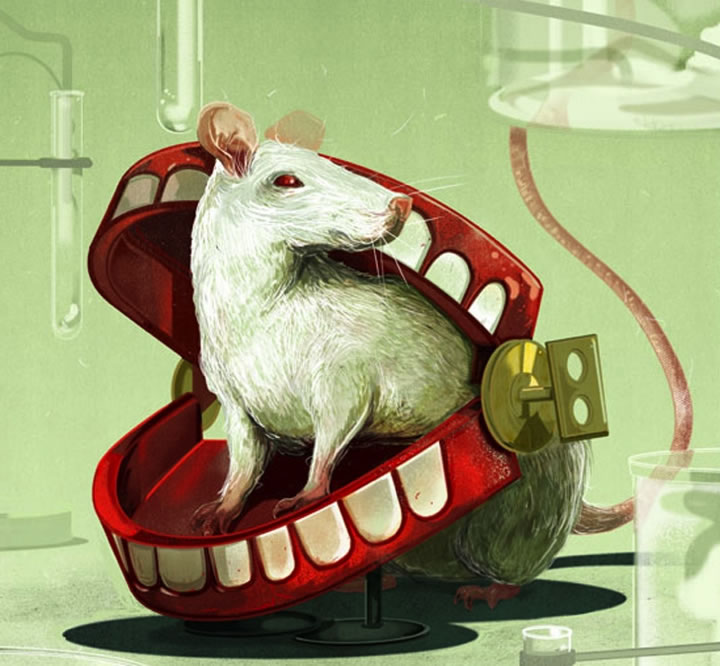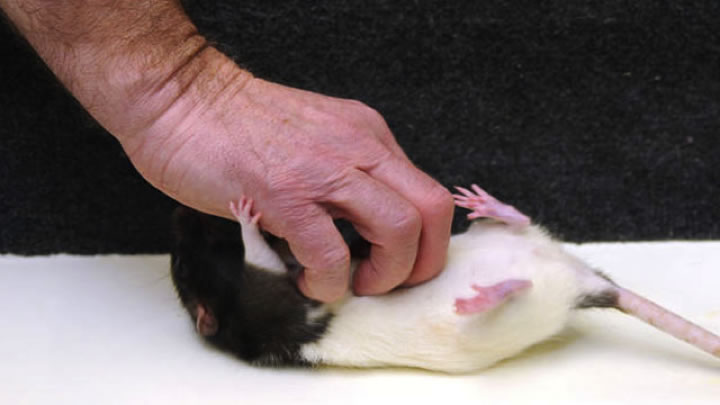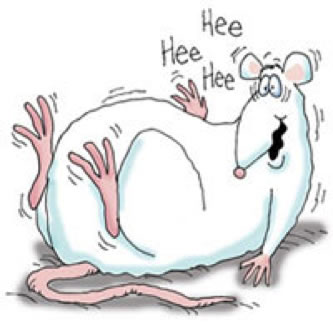Laughter-Like Behavior in Rattus novegicus
Biology 342 Fall 2012
by Anna Fimmel
Laughter-Like Behavior in Rats

The Pursuit of Rattiness
Calling someone a filthy rat might get you in trouble. However, humans may have a lot more in common with these fuzzy creatures than they would initially think.
Brown rats (Rattus norvegicus), who are curious, social animals often used as laboratory animals and kept as pets (Johnson, 2012), communicate with each other using ultrasonic chirps (Wöhr & Schwarting, 2007). Recently, studies have demonstrated that, if exposed to heterospecific hand-play (scientific operational definition of 'tickling'), rats will ‘laugh’ (make specific chirps) at a frequency of 50 kHz, which must be transduced using a bat detector in order for humans to register the sound (Free Science Lectures, 2007). Pictured below is a researcher assiduously tickling a test subject (and the test subject ostensibly exhibiting laughter-like behavior). How did this behavior start evolutionarily? What are the advantages of laughter (or laughter-like behavior-- these two terms will be used interchangeably on this site)? Does a rat's environment growing up influence how it laughs?
This website's purpose is to serve as a means to educate web readers on laughing behavior in rats, using Tinbergen’s Four Questions (explained on each page) as a framework of evaluation.
The Problem of Anthropomorphism-- A Word of Caution

When discussing animals behaving in ways that appear similar to humans, one must be careful not to anthropomorphize (Panksepp, 2003).
Anthropomorphism, or “the attribution of human qualities to nonhuman animals (Wynne, 2007), is not a scientifically salient approach to investigating behavior-- especially behavior that, at first glance, seems human-esque. While laughter is a behavior that usually is, in humans, associated with positive affect and socialization (Edmonds & Miller, 2009), it cannot immediately be said that laughter serves the same purpose in rats. The caveat against anthropomorphism must be kept in mind at all times when evaluating seemingly human-esque behaviors, no matter how tempting it is to ascribe human qualities to non-human animals.
Rats may laugh for the same reasons that humans do, but research must be done to confirm or deny. Nothing can be taken for granted or assumed.